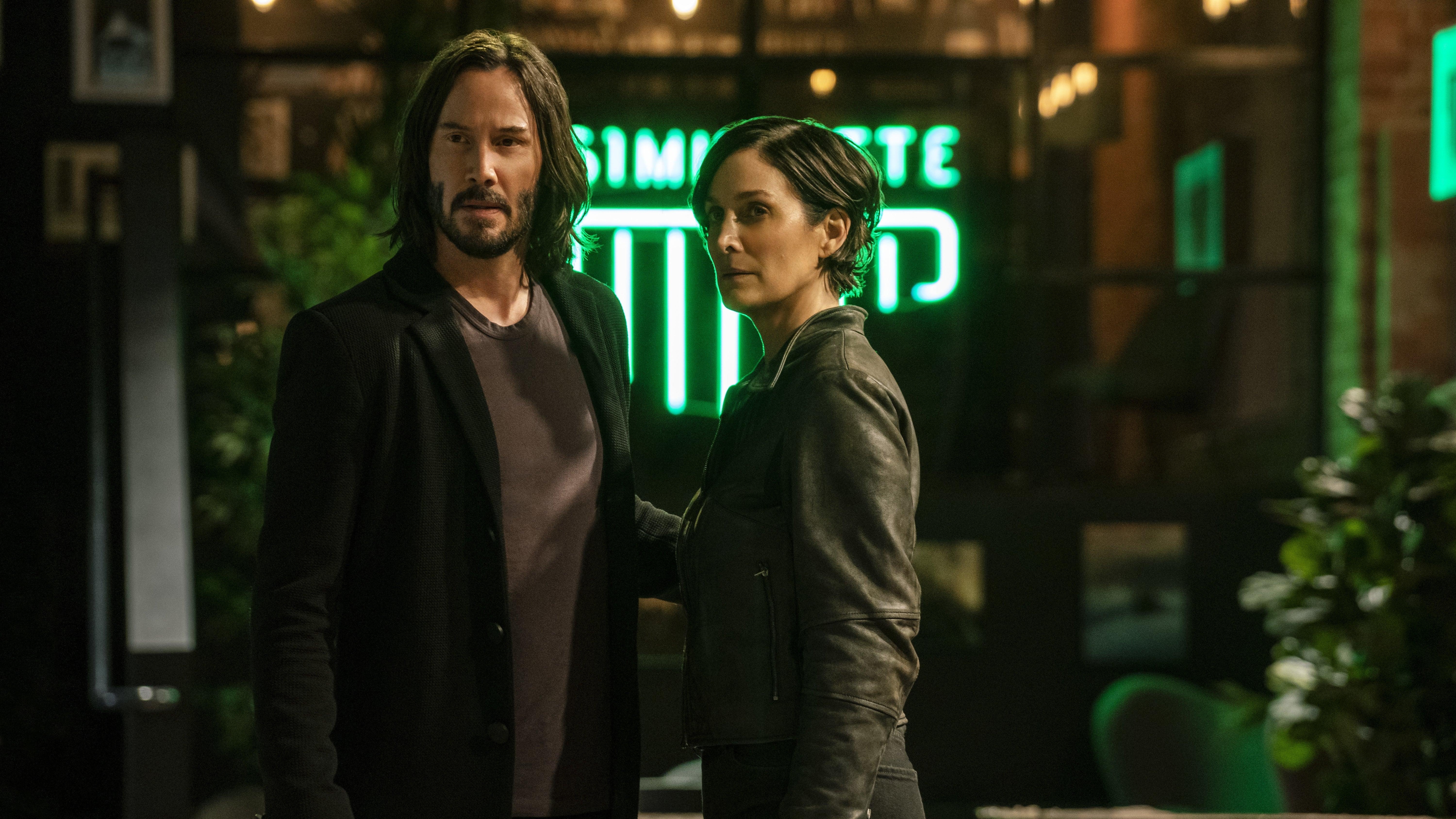Keanu goes back through the looking glass in the legacy sequel The Matrix Resurrections
Lana Wachowski’s solo return to the Matrix franchise is more self-referential than innovative

For its first 45 minutes or so, The Matrix Resurrections plays like Lana Wachowski’s version of Wes Craven’s New Nightmare. In the latter film, Heather Langenkamp played a version of herself, an actress reluctantly returning for a Nightmare On Elm Street sequel that blurs the lines separating reality, fiction, and dreams. Now, Keanu Reeves is not playing “Keanu Reeves” in The Matrix Resurrections. But the mind-bending meta dimension is similar—enhanced, even. This is a Matrix movie, after all.
As the story begins, Neo (Reeves) is once again living the pointless, soulless life of “Thomas Anderson,” having been plugged back into the simulation sometime after the events of The Matrix Revolutions. In this particular program, Thomas Anderson is a world-renowned game developer, hailed for his visionary work on a trilogy of video games called—what else?—The Matrix. Living under the assumption that he had a psychotic break after completing the trilogy, Thomas takes his blue pills every morning, and visits a therapist (Neil Patrick Harris) who explains to him that sometimes creatives get so immersed in their work that they lose the ability to discern imagination from memory.
Then Anderson’s business partner, Smith (Jonathan Groff), calls him into his office and announces that “our benevolent parent company Warner Bros. has decided to make a sequel” to The Matrix. Thus begins the most gratifying stretch of the film, as Wachowski stuffs all of her resentment about the existence of Resurrections into a slickly edited montage set to Jefferson Airplane’s “White Rabbit.” Lana and her sister Lilly have stated many times that they have no interest in continuing The Matrix as a film series. And Resurrections implies that the only reason Lana came back for a fourth movie was that Warner Bros. would have done it with or without her participation. As such, The Matrix Resurrections is a calculated compromise.
Love is still the key to The Matrix’s philosophy in this fourth installment. But first, Wachowski and her co-writers, David Mitchell and Aleksandar Hemon, must air their grievances. They do so through the character of Thomas/Neo, whose depression presumably mirrors the writers’ feelings at having to do a Matrix revival because no one will fund their original ideas. None of the meta elements in the first half of the film are subtle: There’s a cat named Deja Vu, for example, and a coffee shop called Simulatte. But in an era where the body of cinema is being consumed by franchise rot, it’s righteous to see Wachowski kick and scream and bite as she’s dragged into the insatiable maw of recycled IP. Besides, subtlety has never really been the Wachowskis’ thing.
Reeves remains an avatar for Wachowski throughout the film, into a second half that trades screaming into a pillow for a messy but optimistic statement on what it feels like to see something you created grow beyond you. Old favorites from the original trilogy do appear, but it’s the new characters who are most effective in shaking Neo out of his Mr. Anderson funk. These include Bugs (Jessica Henwick), a freedom fighter with blue hair and a white rabbit tattoo, and the new Morpheus (Yahya Abdul-Mateen II), more colorfully dressed but equally unflappable.
These characters approach Neo with an awe reminiscent of how Rey and Finn looked at Han Solo in The Force Awakens. And at times, the second half of The Matrix Resurrections plays like that Star Wars adventure, albeit dressed in cooler clothes. (Don’t be surprised if this movie brings back tiny geometric sunglasses and longline leather jackets.) Like the latter-day Star Wars films, Resurrections is at its weakest when it kowtows to conventional wisdom about what audiences want from a sequel. Wachowski brings some inspired visual touches to the film, like the lines of code that crawl like ants along the edges of windowpanes in the simulation. But these are in constant tension with the dopey callbacks and tortured exposition dumps.
Where Resurrections really disappoints is in the staging of the action. The Hong Kong-influenced long shots that made The Matrix so revolutionary are all but absent, replaced by rapid cuts that render the fight choreography less legible than in previous installments. And although there are a few giddy moments of sci-fi mayhem, the set pieces—and there are many—never reach heights as outrageous or as thrilling as the highway chase sequence in The Matrix Reloaded. Here, Carrie-Anne Moss plays a pivotal role. Her character has been brainwashed into believing that she’s a devoted mother of two named Tiffany, but she still rides a motorcycle like no one else. Call it sense memory.
The hopepunk of it all remains intact. (So does the Wachowskis’ penchant for bizarre aging makeups, for what it’s worth.) This film has one character pointedly remark that “nothing comforts anxiety like a little nostalgia,” but it also has another say, “Hope and despair are almost identical in code.” There’s a clear ambivalence of creator for creation in The Matrix Resurrections, but the impression left by the end is not of bitterness but hope. Confusing, heartfelt, goofy, vulnerable, endearing, all-too-human hope.